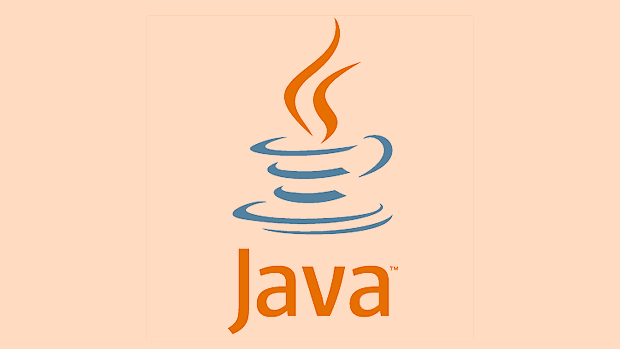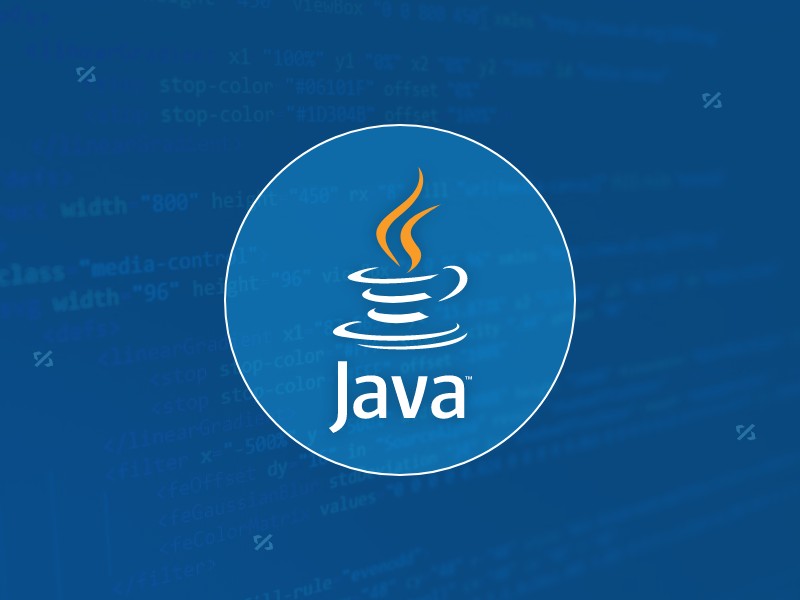Java 8's Lambda expressions make the code more concise by simplifying the anonymous internal class implementation. 1. The basic syntax is (parameter list) -> { method body}, such as Runnable r = () -> System.out.println("Hello"); 2. It is often used for collection traversal and sorting, such as names.forEach(name -> System.out.println(name)) and numbers.sort((a, b) -> a.compareTo(b)); 3. It can only be used for functional interfaces, that is, interfaces with only one abstract method, such as Runnable, Supplier, Consumer, Function, Predicate; 4. The scope of the variable must be final or effectively final, this points to the outer object. Lambda is very practical in handling collections, event listening, and thread tasks, improving development efficiency.

Java 8 introduces Lambda expressions to make the code more concise and readable. If you have written many anonymous internal classes before to implement single-method interfaces (such as Runnable or Comparator ), you will find that Lambda can greatly reduce boilerplate code.

The following sections will explain clearly how to use Lambda expressions, which are suitable for those who are new to Java 8.

Understand the basic syntax of Lambda
The structure of a Lambda expression is actually very simple:
(參數(shù)列表) -> { 方法體}
Let's give the simplest example:

// Traditional writing method Runnable r = new Runnable() {
public void run() {
System.out.println("Hello");
}
};
// Using Lambda
Runnable r = () -> System.out.println("Hello");A few points to note:
- If there are no parameters, brackets cannot be saved.
- If there is only one statement, you can not write
{}andreturn(if it is the case of return value). - If there are multiple statements, it must be wrapped in
{}, and if there is a return value, addreturn.
Common usage scenarios: collection traversal and sorting
One of the most common uses of Lambda is to simplify collection operations. For example, you want to traverse or sort a List:
Traversal List
List<String> names = Arrays.asList("Alice", "Bob", "Charlie");
// This used to be for (String name : names) {
System.out.println(name);
}
// Lambda writing method names.forEach(name -> System.out.println(name)); The forEach method is used here. The passed parameters are an implementation of a Consumer interface, and Lambda is used to implement it.
Sort List
List<Integer> numbers = Arrays.asList(5, 2, 8, 1);
// Previous practices Collections.sort(numbers, new Comparator<Integer>() {
public int compare(Integer a, Integer b) {
return a.compareTo(b);
}
});
// Lambda version numbers.sort((a, b) -> a.compareTo(b)); Here (a, b) are two parameters, -> is followed by an expression that returns the comparison result. This writing is clear and concise.
Functional interface is the basis of Lambda
Lambda can only be used for functional interfaces - that is, interfaces with only one abstract method. Java 8 provides some commonly used functional interfaces, such as:
-
Runnable(no parameters, no return) -
Supplier<T>(no parameter returns) -
Consumer<T>(with parameters but no return) -
Function<T, R>(with parameters and return) -
Predicate<T>(Judgement Conditions)
You can define the functional interface yourself, just make sure it has only one abstract method, or add @FunctionalInterface annotation to clarify this intention.
For example:
@FunctionalInterface
interface MathOperation {
int operate(int a, int b);
}Then you can implement it with Lambda like this:
MathOperation add = (a, b) -> ab; MathOperation multiply = (a, b) -> a * b;
Pay attention to variable scope and this keywords
Two things to note when using external variables in Lambda:
- You can access final variables or variables equivalent to final (that is, they will not change after assignment).
-
thisin a Lambda expression points to a peripheral object, not the Lambda itself (this is different from anonymous classes).
for example:
int factor = 2;
List<Integer> list = Arrays.asList(1, 2, 3);
list.forEach(item -> {
int result = item * factor; // No problem here, because factor is effectively final
System.out.println(result);
}); But if you try to modify factor , the compiler will report an error.
Basically that's it. Although Lambda expressions seem simple, they are very practical in actual development, especially in handling collections, event listening, thread tasks, etc. I may not be used to it at first, so I will be able to write a few more times.
The above is the detailed content of Implementing Lambda Expressions in Java.. For more information, please follow other related articles on the PHP Chinese website!

Hot AI Tools

Undress AI Tool
Undress images for free

Undresser.AI Undress
AI-powered app for creating realistic nude photos

AI Clothes Remover
Online AI tool for removing clothes from photos.

Clothoff.io
AI clothes remover

Video Face Swap
Swap faces in any video effortlessly with our completely free AI face swap tool!

Hot Article

Hot Tools

Notepad++7.3.1
Easy-to-use and free code editor

SublimeText3 Chinese version
Chinese version, very easy to use

Zend Studio 13.0.1
Powerful PHP integrated development environment

Dreamweaver CS6
Visual web development tools

SublimeText3 Mac version
God-level code editing software (SublimeText3)

Hot Topics
 Difference between HashMap and Hashtable?
Jun 24, 2025 pm 09:41 PM
Difference between HashMap and Hashtable?
Jun 24, 2025 pm 09:41 PM
The difference between HashMap and Hashtable is mainly reflected in thread safety, null value support and performance. 1. In terms of thread safety, Hashtable is thread-safe, and its methods are mostly synchronous methods, while HashMap does not perform synchronization processing, which is not thread-safe; 2. In terms of null value support, HashMap allows one null key and multiple null values, while Hashtable does not allow null keys or values, otherwise a NullPointerException will be thrown; 3. In terms of performance, HashMap is more efficient because there is no synchronization mechanism, and Hashtable has a low locking performance for each operation. It is recommended to use ConcurrentHashMap instead.
 What are static methods in interfaces?
Jun 24, 2025 pm 10:57 PM
What are static methods in interfaces?
Jun 24, 2025 pm 10:57 PM
StaticmethodsininterfaceswereintroducedinJava8toallowutilityfunctionswithintheinterfaceitself.BeforeJava8,suchfunctionsrequiredseparatehelperclasses,leadingtodisorganizedcode.Now,staticmethodsprovidethreekeybenefits:1)theyenableutilitymethodsdirectly
 How does JIT compiler optimize code?
Jun 24, 2025 pm 10:45 PM
How does JIT compiler optimize code?
Jun 24, 2025 pm 10:45 PM
The JIT compiler optimizes code through four methods: method inline, hot spot detection and compilation, type speculation and devirtualization, and redundant operation elimination. 1. Method inline reduces call overhead and inserts frequently called small methods directly into the call; 2. Hot spot detection and high-frequency code execution and centrally optimize it to save resources; 3. Type speculation collects runtime type information to achieve devirtualization calls, improving efficiency; 4. Redundant operations eliminate useless calculations and inspections based on operational data deletion, enhancing performance.
 What is an instance initializer block?
Jun 25, 2025 pm 12:21 PM
What is an instance initializer block?
Jun 25, 2025 pm 12:21 PM
Instance initialization blocks are used in Java to run initialization logic when creating objects, which are executed before the constructor. It is suitable for scenarios where multiple constructors share initialization code, complex field initialization, or anonymous class initialization scenarios. Unlike static initialization blocks, it is executed every time it is instantiated, while static initialization blocks only run once when the class is loaded.
 What is the Factory pattern?
Jun 24, 2025 pm 11:29 PM
What is the Factory pattern?
Jun 24, 2025 pm 11:29 PM
Factory mode is used to encapsulate object creation logic, making the code more flexible, easy to maintain, and loosely coupled. The core answer is: by centrally managing object creation logic, hiding implementation details, and supporting the creation of multiple related objects. The specific description is as follows: the factory mode handes object creation to a special factory class or method for processing, avoiding the use of newClass() directly; it is suitable for scenarios where multiple types of related objects are created, creation logic may change, and implementation details need to be hidden; for example, in the payment processor, Stripe, PayPal and other instances are created through factories; its implementation includes the object returned by the factory class based on input parameters, and all objects realize a common interface; common variants include simple factories, factory methods and abstract factories, which are suitable for different complexities.
 What is the `final` keyword for variables?
Jun 24, 2025 pm 07:29 PM
What is the `final` keyword for variables?
Jun 24, 2025 pm 07:29 PM
InJava,thefinalkeywordpreventsavariable’svaluefrombeingchangedafterassignment,butitsbehaviordiffersforprimitivesandobjectreferences.Forprimitivevariables,finalmakesthevalueconstant,asinfinalintMAX_SPEED=100;wherereassignmentcausesanerror.Forobjectref
 What is type casting?
Jun 24, 2025 pm 11:09 PM
What is type casting?
Jun 24, 2025 pm 11:09 PM
There are two types of conversion: implicit and explicit. 1. Implicit conversion occurs automatically, such as converting int to double; 2. Explicit conversion requires manual operation, such as using (int)myDouble. A case where type conversion is required includes processing user input, mathematical operations, or passing different types of values ??between functions. Issues that need to be noted are: turning floating-point numbers into integers will truncate the fractional part, turning large types into small types may lead to data loss, and some languages ??do not allow direct conversion of specific types. A proper understanding of language conversion rules helps avoid errors.
 Why do we need wrapper classes?
Jun 28, 2025 am 01:01 AM
Why do we need wrapper classes?
Jun 28, 2025 am 01:01 AM
Java uses wrapper classes because basic data types cannot directly participate in object-oriented operations, and object forms are often required in actual needs; 1. Collection classes can only store objects, such as Lists use automatic boxing to store numerical values; 2. Generics do not support basic types, and packaging classes must be used as type parameters; 3. Packaging classes can represent null values ??to distinguish unset or missing data; 4. Packaging classes provide practical methods such as string conversion to facilitate data parsing and processing, so in scenarios where these characteristics are needed, packaging classes are indispensable.






